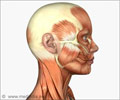Italian researchers said on Thursday they were combining two new and experimental therapies -- using stem cells and gene therapy -- to try to treat
Italian researchers said on Thursday they were combining two new and experimental therapies -- using stem cells and gene therapy -- to try to treat muscular dystrophy. Their early work has shown some success in mice but they warned any real progress is years away.
Writing in the journal Science, the team lead by Dr. Giulio Cossu of the Stem Cell Research Institute in Milan and the University of Rome said certain stem cells had been coaxed into strengthening the muscles of mice with muscular dystrophy.
Cossu and colleagues worked with cells called mesoangioblasts, a type of stem cell. Stem cells are master cells that can produce a whole range of cells and tissues. Mesoangioblasts are called "adult" stem cells although this particular kind has so far been found only in fetuses.
The researchers injected mesoangioblasts into the arteries of mice genetically engineered to lack the alpha sarcoglycan gene -- in effect giving the mice a form of MD. These mesoangioblasts turned up downstream. The team then genetically engineered the stem cells, putting in healthy versions of alpha sarcoglycan gene, and injected these into the mice. Three months later, they found healthy alpha sarcoglycan proteins in the muscles of the treated mice. "The muscle cells of a dystrophied mouse are extremely weak, but a cured mouse recovered almost entirely all its strength," said Roberto Bottinelli from the University of Pavia, who worked on the study.
The experiment proves a theory but some real-world stumbling blocks remain. For instance, the approach would work best if a patient's own mesoangioblasts were used, but these cells have so far only been isolated from fetuses. "I'm convinced this is an important result, but this is still not the therapy, for the mice or for patients," Cossu said.











